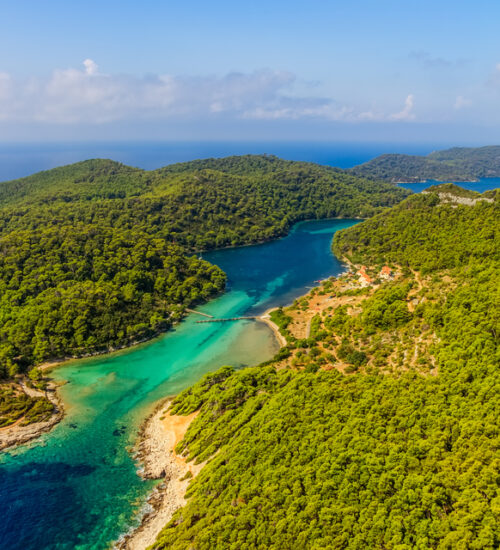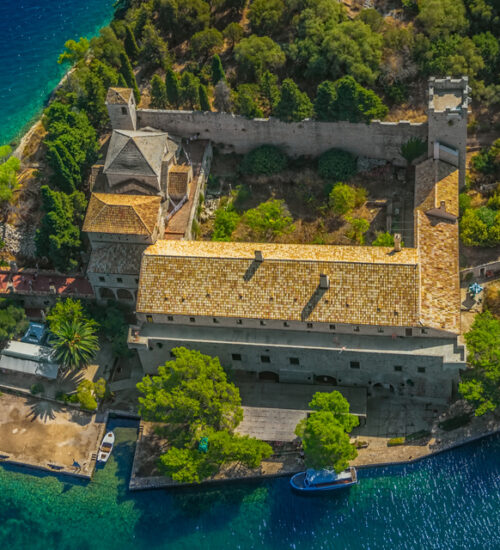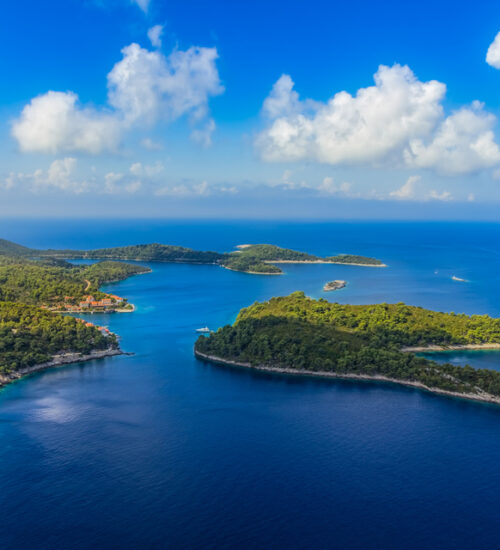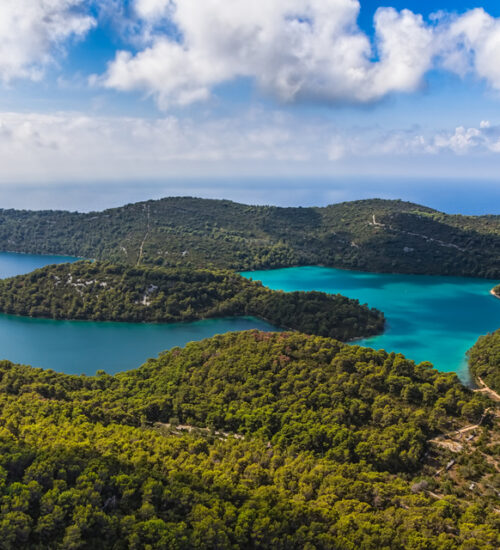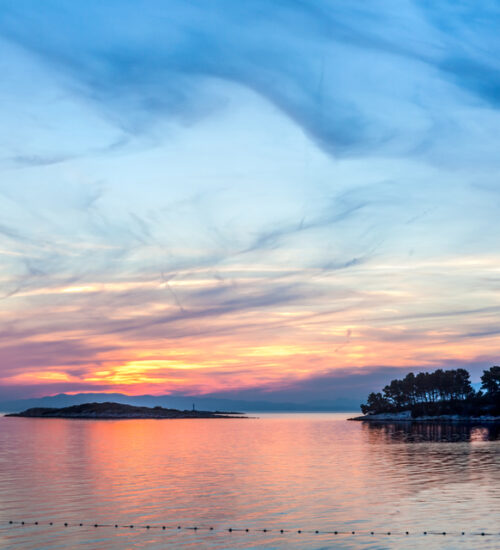


Location
Mljet is one of the largest southern Dalmatian islands; it is also the southernmost and easternmost of the larger Croatian islands. The National Park covers an area in the northwest of Mljet, including nearly 5,400 hectares, including islands and reefs, and the sea zone 500 m from the coast. It takes up about a third of the island of Mljet.
History
National Park Mljet was declared in 1960 and is the first Croatian protected marine area. More than half a century it impresses many visitors with the colours and smells of the untouched nature.
Nature
Slana (Salt) lakes, Malo (small) and Veliko (large), are the most prominent locations of the area and an important geological and oceanographic phenomenon. Malo Lake and Veliko Lake are not real lakes, but are called thus due to their specific geomorphologic appearance. The lakes were formed by flooding of two karst valleys due to rising sea levels after the last ice age. The present appearance they got in the twelfth century, when Benedictine monks settled this area and expanded the channel connecting the lakes to the open sea. Thus, there is a constant exchange of water masses between the lakes and the open sea, which, depending on the tide and low tide changes its flow and thus contributes to the specific conditions of life in the lakes. The lakes are home to numerous species of shells, including the largest Croatian representative, noble pen shell, whose population density in Malo Lake is significantly higher than in other parts of the Adriatic and the Mediterranean. Peculiarities of Mljet lakes are witnessed by the largest coral reef of bushy coral in the Mediterranean Sea, the habitat of a large number of fish and other organisms. The richness of life is very easily observed on land as well. The forest coverage of Mljet is sufficiently described by the highly coveted title “Green Island”, and the National Park is no exception. Almost all of its land area is covered by dense forests, mainly of Aleppo pine and holm oak. There are also well-preserved fragments of Mediterranean rainforests, the original forests of holm oak and black ash. Particularly rich cave fauna should be mentioned as well, among which there are about twenty endemic species and some species recorded are completely new to science.
Sights
Besides its natural beauties and pecularities, the National Park Mljet is rich in archaeological sites. In a gentle bay Polače there are remains of a Roman palace, which stands powerful since the fourth century, and bears a witness to the past times carved in stone. Not far from the palace there are the remains of the old Christian basilica, the largest and perhaps the most beautiful among numerous remnants of old churches on the island. The most prominent representative of the cultural heritage of the National Park is definitely the Monastery of Santa Maria, located on the idyllic island of the same name, in Veliko Lake. It was built in the late twelfth century, when the island of Mljet was donated to the Benedictines, very quickly becoming an important cultural centre of the region. Romanesque elements intertwined with Baroque and Renaissance contribute to the architectural peculiarity of this building.
Tourism
Tourists on Mljet enjoy discovering the beach and sea cave by canoeing, and those looking for recreation go around the National Park by bicycles or hiking. Settlements Polače and Pomena are connected with the lakes by hiking trails. A pleasant stay is supported by swimming, sunbathing and walking trails around the lake and to the peaks Montokuc and Veliki Sladin Gradac, offering an impressive view of the entire National Park, Pelješac peninsula and the sea all the way to the island of Korčula. Visiting Mljet is a unique experience for all those who love nature, culture, old customs and Mediterranean air.
Connection
The National Park Mljet can be visited by ferry from Dubrovnik and Pelješac, and by many tourist boats from Korčula, Hvar and Split, which generally come into ports Polače and Pomena. There are three ferry lines: catamaran line from Dubrovnik, by ferry from Prapratno (peninsula Pelješac) to Sobra and by the catamaran line Split-Brač-Hvar-Korčula-Mljet-Dubrovnik.
Contact
Address:
National park Mljet
Pristanište 2, 20226 Goveđari – Mljet
Telephone:
+385 20 744 041
Web: www.np-mljet.hr
Mail: np-mljet@np-mljet.hr

